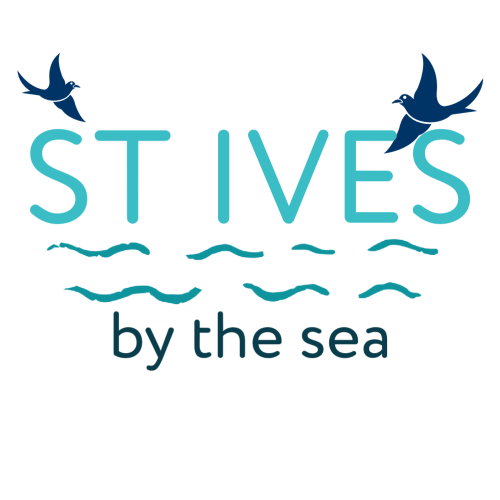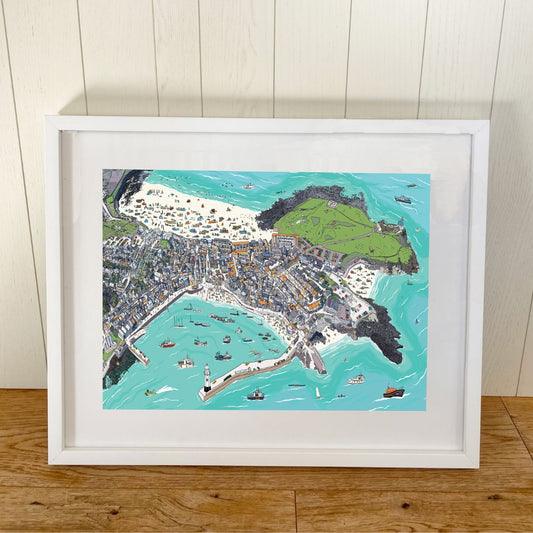Seagulls
The main type of seagull you will see in St Ives is the Herring Gull. This is a large, noisy bird with light grey backs, white under parts and black wing tips with white "mirrors". Their legs are pink with webbed feet. They have heavy, slightly hooked bills marked with a red spot.
The young birds are mottled brown without the red spot on their beaks.
This species is on the red list due to ongoing population declines and wintering population declines.
We also get some Lesser Black-Backed Gulls. These are quite a bit bigger than the Herring Gulls and have much darker wings. They are often seen in pairs and don't tend to congregate in big groups like the Herring Gulls do. I've never seen these gulls attack people for food. I like them!Cormorants and Shags
Cormorants and shags are commonly seen along the coast of St Ives.
These seabirds, known for their striking appearance and excellent diving abilities, are often spotted perched on rocky outcrops or skimming the surface of the sea.
It is easy to get the two birds mixed up, but there are differences.
Cormorants, identifiable by their larger size and distinctive hooked bills, frequently spread their wings to dry in the sun after a dive.
Shags, smaller and more slender, can be distinguished by their green-tinged feathers and characteristic crest during the breeding season.
Both species play a vital role in the coastal ecosystem, feeding primarily on fish and showcasing remarkable underwater hunting skills.
The best place to spot them is off The Island near the NCI Coastguard station and on Merryn Rock ( the big rock in the sea near Porthgwidden Beach).
Seals
Seals are a common sight around the shores of St Ives. They especially like to follow in the fishing boats at high tide, in the hopes of an easy meal.
The main type of seal we get around St Ives is the grey seal. There are colonys down the coast on Seal Island, and over in Mutton Cove by Godrevy lighthouse.
Grey seals live up to 40 years and the males can grow up to 7 meters in length. These are big creatures!
Common seals are ironically less common. They are smaller than the grey seal and have a different shaped head and nostrils.
Dolphins
We are lucky to often get large pods of dolphins in St Ives Bay. They are seen year round, but the large pods are usually here in Winter. They come into the bay to feed. Dolphins are really sociable and love playing in the wake of the boats. The best place to spot them is on a boat. They can be seen from the shore but they tend to stay a little way out and so aren't easy to see.
Most of the dolphins seen around St Ives Bay are Common Dolphins. They grow to around 8 feet and have distinctive white markings on their underside.
Sharks
Believe it or not we do get sharks in the seas around Cornwall. They are usually the Porbeagle shark but you have to be in deeper water to see them.
Basking sharks have been spotted in Mounts Bay but sightings have got less frequent over the last few years.
Whales
Again, I'm really not pulling you leg, but whales are occasionally spotted in St Ives Bay. This last Winter the NCI coastguard has seen Humpback and Minke whales. If you follow them on Facebook they tell you what they have spotted.
Sunfish
A few years ago I spotted a sunfish in St Ives harbour. These are really unusual looking creatures, sort of oval and very large. They come into the bay in the Summer to feed on the jellyfish.






